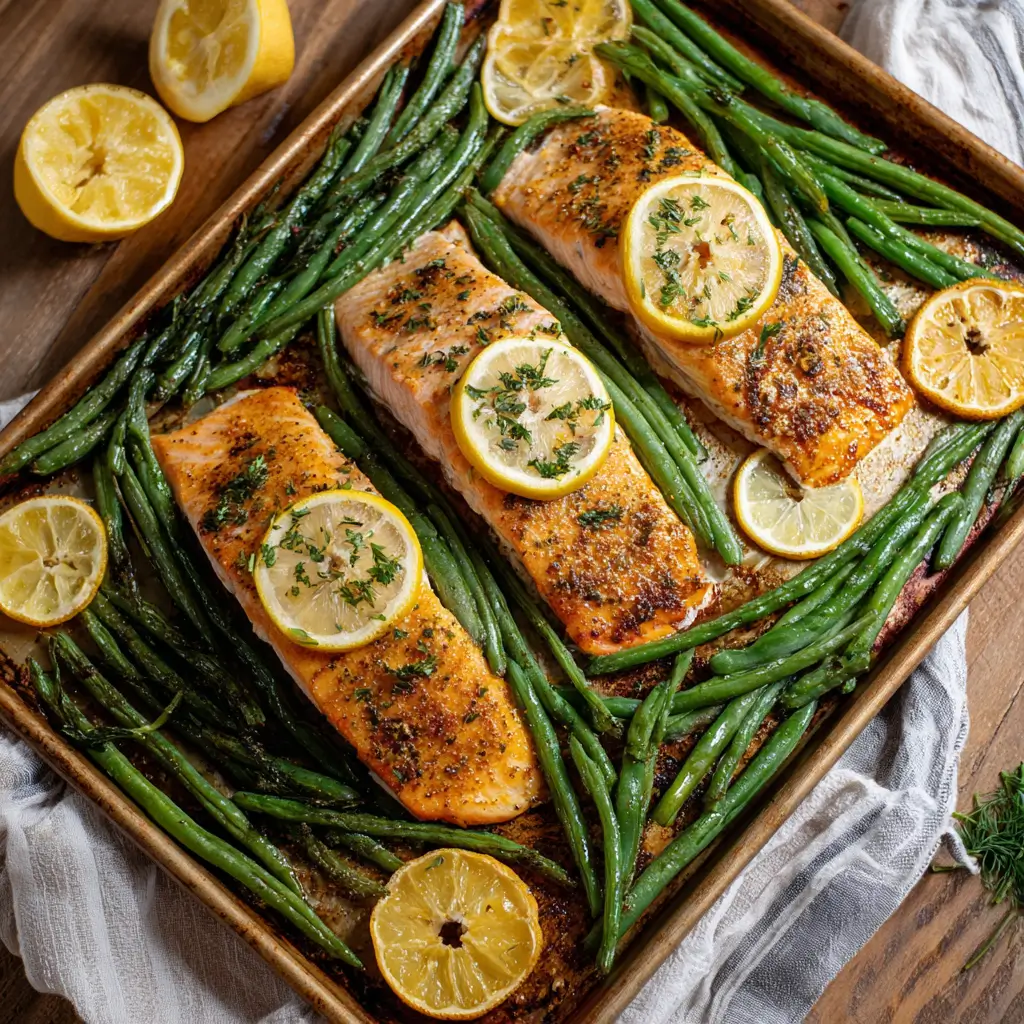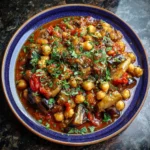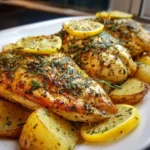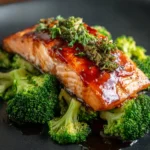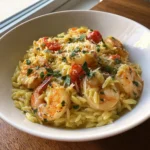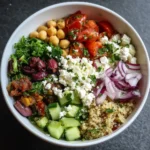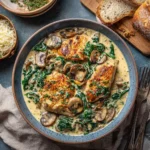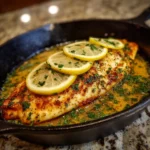Sheet Pan Salmon with Green Beans: A Complete Guide to the Perfect One-Pan Meal
If you’re looking for a quick, nutritious, and delicious weeknight dinner, look no further than Sheet Pan Salmon with Green Beans. This dish is a staple in modern home cooking due to its simplicity, health benefits, and incredible flavor profile. Roasting everything on a single sheet pan not only makes preparation a breeze but also minimizes cleanup—ideal for busy individuals and families alike. In this comprehensive guide, we’ll dive into every aspect of this dish, from its culinary roots to nutritional value, offering you all the tools needed to master it in your own kitchen.
The History of Sheet Pan Meals
The concept of roasting proteins and vegetables together dates back centuries, particularly in Mediterranean and Middle Eastern cuisines where whole trays of seasoned meats and produce were baked in communal ovens. However, the modern iteration known as “sheet pan meals” gained popularity in the 2010s alongside the rise of meal prep culture and healthy eating trends in North America and Europe.
Cooking entire meals on a single baking sheet became a favorite among home cooks due to its efficiency and minimal cleanup. The technique aligns perfectly with contemporary lifestyles that prioritize time-saving strategies without sacrificing nutrition or taste. Salmon, rich in omega-3 fatty acids and prized for its tender texture when roasted, paired naturally with crisp-tender green beans—a vegetable known for its vibrant color and nutrient density—making this combination an instant classic.
Food bloggers, wellness influencers, and celebrity chefs began promoting sheet pan recipes through social media and cookbooks, cementing their place in everyday cooking. Today, Sheet Pan Salmon with Green Beans stands as one of the most beloved iterations of this trend, combining gourmet appeal with family-friendly practicality.
Ingredients Breakdown
The beauty of this recipe lies in its simplicity and use of high-quality, whole ingredients. Here’s a detailed breakdown of what goes into making this flavorful and nutritious dish:
- Salmon Fillets: Preferably skin-on, center-cut fillets (6–8 oz each) from wild-caught or sustainably farmed sources. The natural oils in salmon help keep it moist during roasting and enhance flavor absorption.
- Green Beans: Fresh green beans are ideal; they should be firm, bright green, and snap cleanly when bent. Trimmed and washed thoroughly before use.
- Olive Oil: Extra virgin olive oil adds richness and helps crisp the edges of both the salmon and green beans while promoting even browning.
- Lemon: Both zest and juice contribute a bright, citrusy note that complements the richness of the salmon and cuts through any greasiness.
- Garlic: Freshly minced garlic infuses the dish with aromatic depth. It caramelizes slightly during roasting, adding complexity.
- Dried Herbs: Typically thyme or oregano are used, though rosemary works well too. These herbs provide earthy tones that pair beautifully with seafood and vegetables.
- Salt and Black Pepper: Essential seasonings that enhance all other flavors without overpowering them.
- Optional Additions: Shallots, cherry tomatoes, sliced almonds, or Parmesan cheese can elevate the dish with additional textures and tastes.
Each ingredient plays a vital role in creating balance—richness from the salmon, freshness from the beans, acidity from lemon, and aroma from herbs and garlic—resulting in a harmonious final product.
Step-by-Step Recipe
Follow these detailed steps to create a perfectly roasted Sheet Pan Salmon with Green Beans every time:
- Preheat Oven: Set your oven to 425°F (220°C). This high temperature ensures the salmon develops a delicate crust while remaining flaky inside, and the green beans caramelize slightly at the tips.
- Prepare Baking Sheet: Line a large rimmed baking sheet with parchment paper or lightly grease it with olive oil to prevent sticking. Parchment paper is recommended for easier cleanup.
- Season Green Beans: In a large bowl, toss the trimmed green beans with 2 tablespoons of olive oil, 1 minced garlic clove, ½ teaspoon dried thyme, salt, and freshly ground black pepper. Spread them out evenly on one side of the prepared baking sheet in a single layer to ensure proper roasting (not steaming).
- Prepare Salmon: Pat the salmon fillets dry with paper towels—this step is crucial for achieving a nice sear. Place them skin-side down (if applicable) on the other side of the sheet pan, leaving space between each piece for air circulation.
- Season Salmon: Drizzle each fillet with ½ tablespoon olive oil. Sprinkle with lemon zest, a pinch of salt, black pepper, and another small clove of minced garlic. Cut a lemon into thin slices and place a couple of wedges beside or on top of the fillets for added moisture and flavor.
- Roze: Place the sheet pan in the preheated oven. Roast for 12–15 minutes, depending on the thickness of the salmon. The green beans should be tender-crisp and lightly charred in spots, and the salmon should flake easily with a fork and reach an internal temperature of 145°F (63°C).
- Optional Broil: For extra browning on the salmon, switch the oven to broil for the last 1–2 minutes, watching closely to avoid burning.
- Rest and Serve: Remove from the oven and let the salmon rest for 2–3 minutes. Squeeze fresh lemon juice over the top just before serving to brighten the flavors.
This method guarantees restaurant-quality results with minimal effort.
Tips for Success
- Uniform Cutting: Ensure green beans are cut to similar lengths so they cook evenly.
- Dry Salmon: Always pat salmon dry before seasoning—it prevents steaming and encourages better browning.
- Don’t Crowd the Pan: Overcrowding leads to steaming instead of roasting. Use two pans if necessary.
- Use High Heat: 425°F is optimal. Lower temperatures may result in soggy beans and undercooked fish.
- Check Early: Ovens vary; start checking at 10 minutes to avoid overcooking the salmon.
- Skin-On vs. Skin-Off: Skin helps protect the flesh and keeps it moist. If desired, the skin can be removed after cooking.
- Acid at the End: Adding lemon juice post-roasting preserves its freshness and zing.
- Let It Rest: Allowing the salmon to rest redistributes juices for maximum tenderness.
Variations and Customizations
One of the greatest strengths of this recipe is its adaptability. Here are several creative variations to suit different tastes and dietary needs:
- Mediterranean Style: Add halved cherry tomatoes, Kalamata olives, red onion slices, and crumbled feta. Finish with fresh oregano and a drizzle of tzatziki or hummus.
- Asian-Inspired: Replace olive oil with sesame oil, add grated ginger, soy sauce or tamari, and a splash of rice vinegar. Garnish with green onions and sesame seeds.
- Herb-Crusted Salmon: Coat the salmon with a mixture of Dijon mustard, breadcrumbs, parsley, dill, and capers before roasting.
- Spicy Kick: Toss green beans with crushed red pepper flakes or coat salmon with a blend of smoked paprika and cayenne for heat.
- With Potatoes: Add baby potatoes (parboiled first) to the pan for a heartier meal. Toss with rosemary and garlic.
- Dairy-Free & Vegan Option: Substitute salmon with marinated tofu or tempeh and adjust roasting time accordingly.
- Citrus Swap: Use orange or lime instead of lemon for a different citrus profile.
- Nutty Crunch: Sprinkle sliced almonds or pine nuts over green beans during the last 5 minutes of cooking.
You can also customize based on seasonal availability—swap green beans for asparagus in spring, broccoli in winter, or zucchini in summer.
Health Considerations and Nutritional Value
Sheet Pan Salmon with Green Beans isn’t just tasty—it’s incredibly nutritious. Here’s why this meal deserves a regular spot on your plate:
- Omega-3 Fatty Acids: Salmon is one of the best sources of EPA and DHA, which support brain health, reduce inflammation, and lower heart disease risk.
- High-Quality Protein: Each serving provides about 20–25g of complete protein, essential for muscle repair and satiety.
- Fiber-Rich Vegetables: Green beans offer dietary fiber, aiding digestion and helping maintain stable blood sugar levels.
- Vitamins and Minerals: Rich in vitamin C (from lemon and green beans), vitamin K (for bone health), folate, potassium, and antioxidants like lutein and zeaxanthin.
- Heart-Healthy Fats: Olive oil contributes monounsaturated fats linked to improved cholesterol profiles.
- Low in Refined Carbs: Naturally gluten-free and suitable for low-carb, keto, paleo, and Whole30 diets with minor adjustments.
- Calorie-Controlled: A typical serving ranges from 350–450 calories, making it ideal for weight management plans.
For those concerned about mercury, salmon is considered a low-mercury fish and safe for regular consumption, including by pregnant women (up to 12 oz per week according to FDA guidelines). Opting for wild-caught salmon may offer slightly higher nutrient levels and fewer environmental contaminants compared to farmed varieties, though both remain excellent choices.
Ingredients
- 4 (6 oz) salmon fillets, skin-on preferred
- 1 lb fresh green beans, trimmed
- 3 tablespoons extra virgin olive oil, divided
- Zest and juice of 1 lemon, divided
- 3 cloves garlic, minced, divided
- 1 teaspoon dried thyme (or 1 tbsp fresh)
- Salt and freshly ground black pepper, to taste
- 1 lemon, thinly sliced (for garnish)
- Fresh parsley or dill, chopped (optional, for garnish)
Directions
- Preheat oven to 425°F (220°C). Line a large rimmed baking sheet with parchment paper.
- In a large bowl, combine green beans, 2 tablespoons olive oil, 1 clove minced garlic, dried thyme, ½ teaspoon salt, and ¼ teaspoon black pepper. Toss until evenly coated. Spread in a single layer on one side of the baking sheet.
- Pat salmon fillets dry with paper towels. Place them skin-side down on the other side of the sheet pan, ensuring space between each fillet.
- In a small bowl, mix 1 tablespoon olive oil, lemon zest, remaining 2 cloves minced garlic, ½ teaspoon salt, and ¼ teaspoon pepper. Brush or spoon this mixture over the top of each salmon fillet.
- Arrange lemon slices around or on top of the salmon.
- Roast in the preheated oven for 12–15 minutes, or until salmon is opaque and flakes easily with a fork, and green beans are tender-crisp with slight charring.
- Remove from oven and let rest for 3 minutes. Squeeze fresh lemon juice over the salmon and vegetables.
- Garnish with chopped fresh herbs if desired and serve immediately.
FAQ
Can I use frozen green beans?
While possible, fresh green beans yield superior texture and flavor. If using frozen, thaw and pat dry thoroughly to avoid excess moisture.
Can I cook the salmon and green beans separately?
Yes, especially if your salmon is very thick or your beans take longer to cook. You can roast the beans first for 10 minutes, then add the salmon and continue roasting.
How do I store leftovers?
Store cooled leftovers in an airtight container in the refrigerator for up to 3 days. Reheat gently in the oven or microwave.
Can I freeze this dish?
Salmon can be frozen after cooking, but the texture may become slightly softer upon reheating. Green beans don’t freeze well after roasting, so it’s best enjoyed fresh.
Is this recipe kid-friendly?
Absolutely! Many children enjoy the mild flavor of salmon when paired with lemon and roasted veggies. Cutting the salmon into smaller pieces and serving with a dip like yogurt-dill sauce can make it more appealing.
What sides go well with this meal?
Serve with quinoa, brown rice, couscous, or crusty whole-grain bread to make it more filling. A simple arugula salad with lemon vinaigrette complements the dish beautifully.
Can I use other types of fish?
Yes—cod, trout, halibut, or sea bass can be substituted. Adjust cooking time as thinner fillets may require only 10 minutes.
Summary
Sheet Pan Salmon with Green Beans is a nutritious, easy-to-make meal that delivers bold flavors with minimal effort. Perfect for weeknights, meal prep, or impressing guests, it combines heart-healthy salmon and crisp-tender green beans in a harmonious one-pan wonder.
